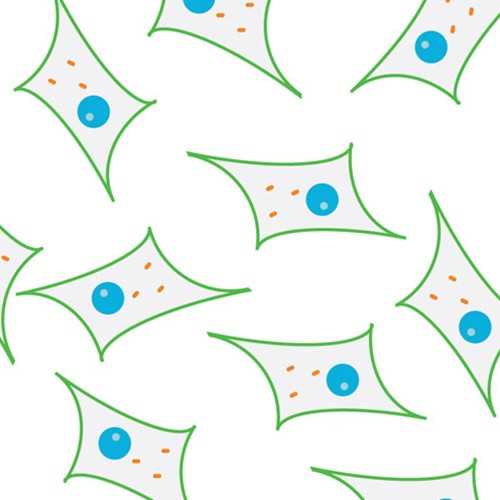Oral Epithelial HIV Cell Line
Immortalized human oral epithelial cell line (iOECHHN) derived from a HIV+ (HAART naïve) subject.
Highlights:
- Primary oral epithelial cells (POECs) transfected with lentiviral vectors carrying the SV40 T antigen allowing for permanent use of cells
- Isolated from gingival tissue from a 47 year old HIV+ (HAART naive) subject
The oral epithelium is the most abudant structural tissue lining the oral mucosa, and is an important factor in fighting infectious microorganisms. Human immunodeficiency virus (HIV) is a lentivirus that causes the acquired immunodeficienty syndrome (AIDS). Due to the availability of highly active-retroviral therapy (HAART), HIV+ infected patients are living longer. HIV infected subjects on HAART are suspectible to comorboid microbial infections in the oral cavity.
From the laboratory of Aaron Weinberg, DMD, PhD and Santosh K. Ghosh, PhD, Case Western Reserve University.
 Part of The Investigator's Annexe program.
Part of The Investigator's Annexe program.
Immortalized human oral epithelial cell line (iOECHHN) derived from a HIV+ (HAART naïve) subject.
Highlights:
- Primary oral epithelial cells (POECs) transfected with lentiviral vectors carrying the SV40 T antigen allowing for permanent use of cells
- Isolated from gingival tissue from a 47 year old HIV+ (HAART naive) subject
The oral epithelium is the most abudant structural tissue lining the oral mucosa, and is an important factor in fighting infectious microorganisms. Human immunodeficiency virus (HIV) is a lentivirus that causes the acquired immunodeficienty syndrome (AIDS). Due to the availability of highly active-retroviral therapy (HAART), HIV+ infected patients are living longer. HIV infected subjects on HAART are suspectible to comorboid microbial infections in the oral cavity.
From the laboratory of Aaron Weinberg, DMD, PhD and Santosh K. Ghosh, PhD, Case Western Reserve University.
 Part of The Investigator's Annexe program.
Part of The Investigator's Annexe program.
This product is for sale to Nonprofit customers only. For profit customers, please Contact Us for more information.
| Product Type: | Cell Line |
| Name: | iOECHHN |
| Cell Type: | Oral Epithelial Cells |
| Accession ID: | CVCL_0P76 |
| Morphology: | Epithelial |
| Organism: | Human |
| Source: | Gingival Tissue |
| Biosafety Level: | 1 |
| Subculturing: | 1 week |
| Growth Conditions: | Epilife+HKGS+1% PSG |
| Cryopreservation: | 10% DMSO |
| Storage: | Liquid nitrogen |
| Shipped: | Dry ice |
- Ghosh SK, McCormick TS, Eapen BL, Yohannes E, Chance MR, Weinberg A. Comparison of epigenetic profiles of human oral epithelial cells from HIV-positive (on HAART) and HIV-negative subjects. Epigenetics. 2013 Jul;8(7):703-9.
If you publish research with this product, please let us know so we can cite your paper.


